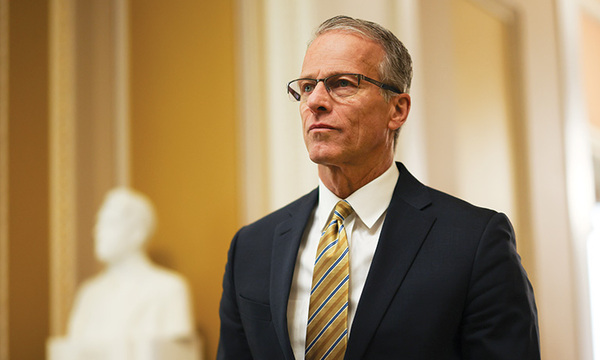
One of the key measures of a university’s health is the size of its endowment, a savings account of sorts that helps to provide strong financial footing and keep tuition affordable. In the fall, Biola’s endowment crossed a historic threshold, reaching $100 million for the first time — more than quadruple its size from just 10 years ago. Michael Pierce, vice president of business and financial affairs, recently answered some questions about the milestone and what it means for Biola moving forward.
Mike, can you briefly explain how an endowment works, and why it’s important for Biola to have a strong and growing endowment?
An endowment is similar to a savings account. It represents the accumulated savings of the university over time, established via year-end surpluses, donations and maturing trusts. The endowment is made up of restricted and unrestricted components. For example, a donor may provide an endowed scholarship that is restricted for nursing students. Other pieces of the endowment may be unrestricted, meaning that those funds can be used for any university need. The endowment is invested in a variety of stocks, bonds and real estate funds, and each year a portion of those investment earnings are used to support the operations of Biola. It’s important to have a large and growing endowment as this provides greater financial flexibility and security for us, and helps us to keep tuition rates as low as possible.
What is the significance of reaching $100 million? What does this mean for Biola’s financial health?
Having a $100 million endowment is quite an achievement, especially considering Biola’s history and mission. (That is to say, our graduating students are more likely to be pastors and those of modest means than corporate CEOs who have ample resources to give back to their alma mater). It means that we’re in a good place financially, but as we seek to grow and make tuition more affordable for our students, we need to continue to grow and prudently invest the endowment. There have been some studies that show a direct correlation between college affordability and endowment size. As we seek to improve the affordability of a Biola education, we must continue to grow our endowment.
How does Biola’s endowment compare with other Christian universities?
Our endowment puts Biola in the top tier of Christian universities. As of the most recent available data, in June 2012, Biola had the ninth-largest endowment among schools in the Council for Christian Colleges & Universities. Our number was $79 million then, and has since grown to just over $100 million.
How much has Biola’s endowment grown over the last 10 years, and what has contributed to its growth?
In the 2002–03 fiscal year, Biola and the Board of Trustees established an Endowment Growth Policy. Simply put, they wanted to grow the endowment as a percentage to our operating budget. At the time, the endowment was approximately $24 million, representing roughly 30 percent of our $81 million operating budget. This year, our operating budget is approximately $185 million with an endowment of $100 million, or 54 percent. Contributing to that growth has been donations, maturing trusts and 50 percent of each year-end surplus. Investment earnings also play a role in the growth of the endowment.
What role have donations and estate gifts played in its growth?
Contributions, estates and bequests have contributed over $22 million, plus the income earned on those contributions. We are deeply grateful for the friends of Biola who have invested in this Christ-centered university through their estates and planned gifts.
Now that Biola has reached this $100 million milestone, does that mean the university no longer needs financial support?
The university will always need financial support, regardless of how big its endowment gets. The endowment is used for a variety of purposes, including student scholarships, building maintenance (for example, the normal upkeep on the Talbot East building) and general university needs. As I mentioned earlier, there is a direct correlation between student affordability and endowment size. So hypothetically, let’s say we wanted to provide a free Biola education to every undergraduate student. We currently have 4,300 of these students paying an average of $23,300 per student (after average scholarships are applied). That means students are paying Biola just over $100 million each year in tuition (excluding room and board and in today’s dollars). After inflation, we forecast ourselves to earn about 4.5 percent on our endowmentrelated investments. So, to provide a $100 million in annual tuition we need an endowment (free from any other restrictions — i.e. Talbot East maintenance) of over $2.2 billion. That seems like a big number, but when you consider the schools that have an endowment of $1 billion or greater — 71 of them as of June 2012 — I think we can do it.
How does the endowment differ from the Biola Fund and other scholarship support that Biola seeks to raise each year?
Endowment items are put into this savings account analogy, and invested. The earnings from the investment are used to provide future scholarships or other needs. So if a donor provided a $1 million endowed scholarship, we’d invest that and provide $45,000 (assuming a 4.5 percent return) in annual scholarships. That would go on in perpetuity. The Biola Fund and other scholarships are spent in the current year, and need to be raised each year for us to use them.
 Biola University
Biola University


